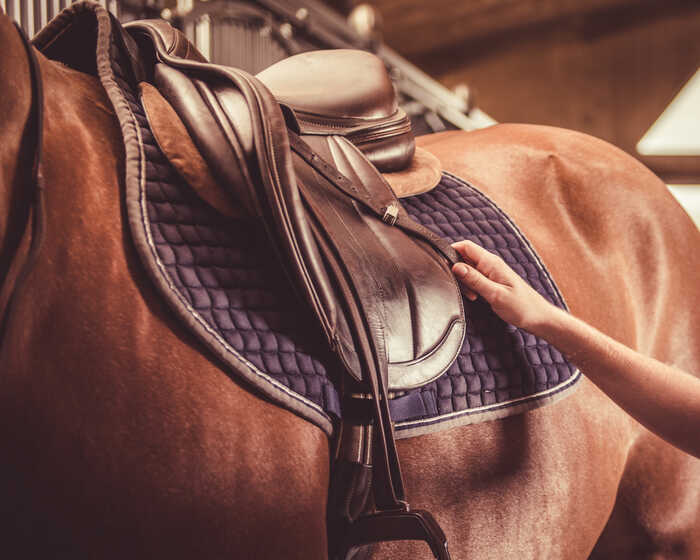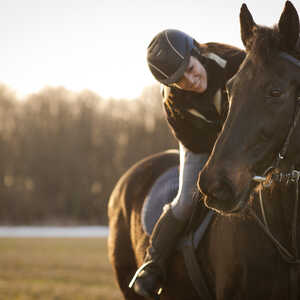Help and advice
Does Your Saddle Still Fit?
Why it might be time for a check...
A well-fitted saddle can transform how your horse moves and how you ride. But even the best saddle fit doesn’t last forever. Changes in your horse’s shape, age, workload or routine can all impact the fit – and a small shift can make all the difference!
We often speak with riders who are dealing with slipping saddles, tight gullets, or horses suddenly objecting to being tacked up. Often, it’s the saddle fit that’s to blame – and the sooner it’s spotted, the better.
So, if something’s not feeling quite right, here are some signs to look out for.

Your saddle keeps slipping
Sign of a poor fit
If your saddle is creeping forward onto the shoulders, sliding back, or dropping to one side, that’s a clear sign of a poor fit. Saddles should sit level and secure. Slipping could mean the panels no longer match your horse’s shape – often due to changes in muscle, weight, or posture.
Your horse is moving differently
Look for subtle changes in rhythm or resistance
Is your horse fussing when mounted, rushing transitions, or becoming tight through the back? These may be signs of discomfort caused by pressure points or bridging. A well-fitted saddle should support soft, forward movement. If things suddenly feel “off”, trust your instincts and investigate the fit.
There’s less clearance over the withers
Space matters – even by a few millimetres
When mounted, you should have room for 3–4 fingers between the pommel and your horse’s withers, and a clear gullet channel down the spine. If the saddle is touching or sitting too close, it’s time to reassess. Clearance can reduce gradually with flocking compression – especially in used saddles.

The saddle rocks or lifts at the back
Movement means a mismatch
When you ride, the saddle should stay still – no tipping, rocking, or bouncing. If the cantle lifts when you rise to trot, or the front dips when you sit, it could be bridging or poor weight distribution. This movement can cause pain over time, even if things look okay at rest.
The panels feel hard or lumpy
Compressed flocking needs attention
Over time, flocking can settle unevenly or become compacted. If the panels feel rock hard, misshapen, or very different on each side, they could be causing pressure. Run your hand underneath the saddle – if it’s not smooth and even, it may need a reflock or a replacement.
You’re not comfortable in the saddle
Fit matters for the rider, too
When it comes to saddle fitting, the rider's position, balance, and security matter too! If your seat feels too tight, you’re being pushed out of position, or you feel unstable in transitions or jumps, that’s worth investigating. A good fit should feel supportive and natural.

When to get a saddle fitter involved
Saddle checks should be part of your routine – especially after your horse gains or loses muscle, comes back into work, or changes weight. If you're ever unsure, a professional saddle fitter can help assess the situation properly.
You can book a saddle fitter near you or talk to us for guidance.
Posted on September 26th 2025

